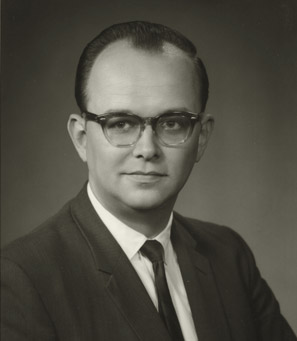Science Fiction and Fact

1956
The Many Worlds Interpretation
Hugh Everett completes his Ph.D. thesis in 1956. It is titled
"'Relative State' Formulation of Quantum Mechanics" but becomes
generally known as the Many Worlds Interpretation or the theory of
parallel worlds. Everett's theory provides one solution to the
paradox inherent in the Copenhagen Interpretation, as seen in
Schrödinger's thought experiment. The Copenhagen Interpretation
relies on the idea of a waveform collapse, but Everett suggests
something entirely different—a waveform "branching." Although
we only see one outcome—the cat is either alive or
dead—there are actually multiple parallel worlds that
collectively contain all of the outcomes that we don't see.